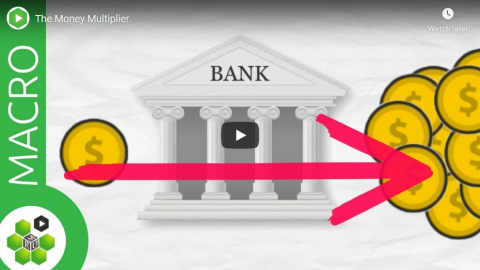Marginal Revolution University
Published on 25 Jul 2017When you deposit money into a bank, do you know what happens to it? It doesn’t simply sit there. Banks are actually allowed to loan out up to 90% of their deposits. For every $10 that you deposit, only $1 is required to stay put.
This practice is known as fractional reserve banking. Now, it’s fairly rare for a bank to only have 10% in reserves, and the number fluctuates. Since checkable deposits are part of the U.S. money supplies, fractional reserve banking, as you might have guessed, can have a big impact on these supplies.
This is where the money multiplier comes into play. The money multiplier itself is straightforward: it equals 1 divided by the reserve ratio. If reserves are at 10%, the minimum amount required by the Fed, then the money multiplier is 10. So if a bank has $1 million in checkable deposits, it has $10 million to work with for stuff like loans and reserves.
Now, typically, the money multiplier is more like 3, because banks can always hold more in reserves than the minimum 10%. When the money multiplier is higher, like during a boom, this gives the Fed more leverage to move M1 and M2 with a small change in reserves. But when the multiplier is lower, such as during a recession, the Fed has less leverage and must push harder to wield its indirect influence over M1 and M2.
Next up, we’ll take a closer look at how the Fed controls the money supply and how that has changed since the Great Recession.
September 25, 2019
The Money Multiplier
Comments Off on The Money Multiplier
No Comments
No comments yet.
RSS feed for comments on this post.
Sorry, the comment form is closed at this time.




